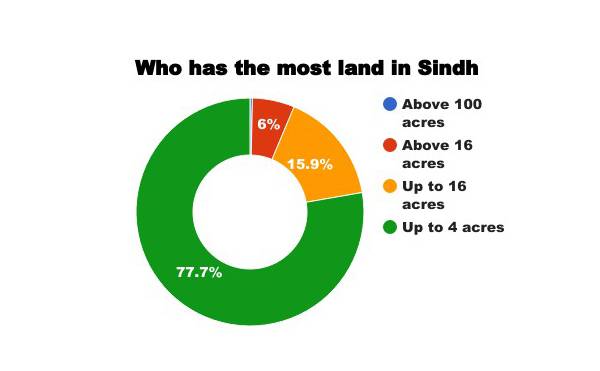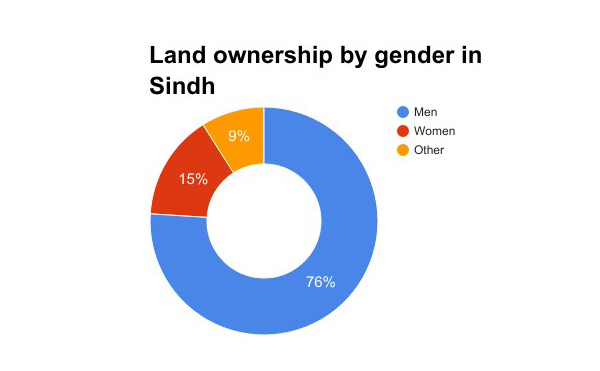
Pakistan is on the brink of an information technology revolution if the departments collecting and managing data at the provincial and federal levels joined hands. Consider the massive amounts of data we are sitting on. Take for example, the work done by the National Database & Registration Authority (Nadra). It has data such as a citizen’s photographs, fingerprints and family details. Likewise, the census data being collected now contains the number of people, houses and facilities in a household. Add to this the computerisation of Sindh and Punjab’s land records with their information of present and past ownership of land and houses. If we combined all three data sets, we would get a detailed profile of every citizen and household with elaborate socio-economic and ownership layers. You won’t find this kind of rich information in any other country in the region. Even most of the countries in the Global North have this information in fragmented form.
The federal and provincial governments are making two parallel efforts. At the federal level, the census is gathering the details of each household, the number of families, number of people with their age groups, the nature of the residence (cemented or mud), ownership status (owned or rented), number of rooms. The enumerators are also collecting demographic information such as language spoken and literacy rate. The census also plans to mark the geo-coordinates of each household as well.

In the last five years, the Government of Sindh has tasked the Board of Revenue with computerising rural and urban land and property ownership records of more than seven million landowners in LARMIS (Land Administration & Revenue Management Information System). This data has been stored in a US-certified state-of-the-art Tier 3 data center. Likewise data for four million registered urban and rural properties, executed in the last 30 years, are also being computerized by December 2017.
The Board of Revenue in Sindh has launched its website www.sindhzameen.gos.pk which has already been visited by more than 0.8 million people in the last year to check their ownership records. The federal and provincial institutions such as the Federal Board of Revenue regularly access it to cross check information provided in income tax returns. This has immensely helped them ascertain the ground realities of taxpayers. Banks in Sindh have started to verify the land records directly from this website for individuals who apply for loans by mortgaging their properties.
Take the case of Karachi city, for instance where the BoR has computerized the ownership records of city surveyed properties of Karachi (28 quarters commonly known as Old Karachi) and is also computerizing all the registries since 1984 of Karachi pertaining to the sub-registrar. These computerized registries cover all the properties of Karachi, including those of DHA, KMC, KDA, the cantonment boards and other land management agencies.
Thus a detailed property ownership profile of all the registered properties of Karachi will be available shortly with the names and CNICs of buyers and sellers, size, exact location and nature of property (commercial residential industrial etc), dates of buying and selling.
If this data of ownership of each property is linked with the census data of each household, a comprehensive profile of each house in Karachi can be developed which would inform us about the socio-economic and demographic details and current and previous ownership, approved area of the property, taxes and duties paid etc. This information, when integrated, has a massive potential to bring about significant improvements in infrastructural development, ownership security, tax management and effective administration in the country. When the state accounts for all the registered properties in a country, a larger number of new and old properties can be included in the property tax net.
Details from the census such as number of rooms, number of people per house, availability of water, gas, electricity etc. can help create tax brackets as well as statistically determine which under-privileged areas need infrastructural development. Geo-coordinates taken during the census can be plotted on the maps of the Board of Revenue to mark the exact location of each property. Capturing the CNIC numbers of households and subsequently geo-tagging households will help reveal migratory and urbanization trends in the country. The integration of such data will be one of the most innovative steps in the IT sector in the entire region and will create an excellent tool for the country’s security, cross checking the information provided by citizens, safety of property ownership, efficient taxation mechanisms, improved planning for infrastructure (water supply, sanitation, roads) etc. and other government policies at the local, provincial and federal levels.
However, the greatest challenge to such achievements is the tendency of government institutions to jealously safeguard their information which needs to be addressed at a policy level. We need to know that knowledge is not power unless it is applied in real life situations and in the current times. Pakistan has an excellent opportunity to massively improve its data quality by integration and smart analysis. We hope that provincial and federal governments will understand just how powerful this could be.
The writer is Member (Reforms) Board of Revenue and head of the Land Record Computerization Project of Sindh. He holds a Masters in Public Affairs from Indiana University
The federal and provincial governments are making two parallel efforts. At the federal level, the census is gathering the details of each household, the number of families, number of people with their age groups, the nature of the residence (cemented or mud), ownership status (owned or rented), number of rooms. The enumerators are also collecting demographic information such as language spoken and literacy rate. The census also plans to mark the geo-coordinates of each household as well.

In God we trust. All others must bring data-W Edwards Deming
In the last five years, the Government of Sindh has tasked the Board of Revenue with computerising rural and urban land and property ownership records of more than seven million landowners in LARMIS (Land Administration & Revenue Management Information System). This data has been stored in a US-certified state-of-the-art Tier 3 data center. Likewise data for four million registered urban and rural properties, executed in the last 30 years, are also being computerized by December 2017.
The Board of Revenue in Sindh has launched its website www.sindhzameen.gos.pk which has already been visited by more than 0.8 million people in the last year to check their ownership records. The federal and provincial institutions such as the Federal Board of Revenue regularly access it to cross check information provided in income tax returns. This has immensely helped them ascertain the ground realities of taxpayers. Banks in Sindh have started to verify the land records directly from this website for individuals who apply for loans by mortgaging their properties.
Take the case of Karachi city, for instance where the BoR has computerized the ownership records of city surveyed properties of Karachi (28 quarters commonly known as Old Karachi) and is also computerizing all the registries since 1984 of Karachi pertaining to the sub-registrar. These computerized registries cover all the properties of Karachi, including those of DHA, KMC, KDA, the cantonment boards and other land management agencies.
Thus a detailed property ownership profile of all the registered properties of Karachi will be available shortly with the names and CNICs of buyers and sellers, size, exact location and nature of property (commercial residential industrial etc), dates of buying and selling.
Capturing the CNICs and geo-tagging households will reveal migratory and urbanization trends. Integrating this with land record data will be one of the most innovative steps in the entire region and help with security, safety of property ownership
If this data of ownership of each property is linked with the census data of each household, a comprehensive profile of each house in Karachi can be developed which would inform us about the socio-economic and demographic details and current and previous ownership, approved area of the property, taxes and duties paid etc. This information, when integrated, has a massive potential to bring about significant improvements in infrastructural development, ownership security, tax management and effective administration in the country. When the state accounts for all the registered properties in a country, a larger number of new and old properties can be included in the property tax net.
Details from the census such as number of rooms, number of people per house, availability of water, gas, electricity etc. can help create tax brackets as well as statistically determine which under-privileged areas need infrastructural development. Geo-coordinates taken during the census can be plotted on the maps of the Board of Revenue to mark the exact location of each property. Capturing the CNIC numbers of households and subsequently geo-tagging households will help reveal migratory and urbanization trends in the country. The integration of such data will be one of the most innovative steps in the IT sector in the entire region and will create an excellent tool for the country’s security, cross checking the information provided by citizens, safety of property ownership, efficient taxation mechanisms, improved planning for infrastructure (water supply, sanitation, roads) etc. and other government policies at the local, provincial and federal levels.
However, the greatest challenge to such achievements is the tendency of government institutions to jealously safeguard their information which needs to be addressed at a policy level. We need to know that knowledge is not power unless it is applied in real life situations and in the current times. Pakistan has an excellent opportunity to massively improve its data quality by integration and smart analysis. We hope that provincial and federal governments will understand just how powerful this could be.
The writer is Member (Reforms) Board of Revenue and head of the Land Record Computerization Project of Sindh. He holds a Masters in Public Affairs from Indiana University

